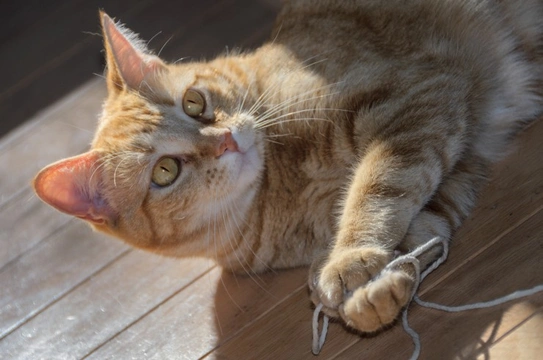
Problems that can arise with polydactyly in cats
Polydactyly refers to having extra digits, like fingers or toes-and a polydactyl cat is one that has extra digits, usually on the front feet, which look and act a little bit like thumbs. While having extra toes can pose a problem for some species of animals, in cats it is usually perfectly fine, and some cats even manage to move around and particularly, climb even more successfully than normal if they have an additional “thumb!”
However, in some rare cases, polydactyly can lead to issues if the cat has too many extra digits, or they are located in a problematic position. If your cat has extra digits or you are expecting a litter from a polydactyl cat (or one that has polydactyly in either their paternal or maternal lineage) it is wise to know what to expect, and how to identify any problems.
In this article, we will look at some of the potential problems that can arise in polydactyl cats, and how to identify them. Read on to learn more.
How does polydactyly occur in cats?
The trait of having extra toes is a hereditary one, and generally occurs repeatedly within the same breed lines and lineages. Generally, the additional digit that some cats posses is located in the position that you would expect a thumb to be, and while this “thumb” is functional to an extent, it does not have the full range of movement that a real thumb would.
The average cat has four toes on each paw, as well as two dewclaws on the front leg too-and polydactyl cats usually have one additional toe on each of the front feet, although there may be more than one, and they can appear on the hind legs too.
How the additional digit (or digits) are constructed can vary from cat to cat too, with some having extra digits with mobile joints, while for others, their spare toes will do little to nothing!
Problems that polydactyly can cause in cats
While the vast majority of polydactyl cats are perfectly normal and healthy, occasionally, the trait can cause problems depending on how it presents itself.
In some presentations of polydactyly, the additional toes may have twisted joints, which can affect movement and be painful for the cat too. In extreme cases, the twisting can extend to the leg and leg joints too, which can be virtually crippling.
However, it is not always possible to tell through observation if a polydactyl cat or kitten’s extra digits are deformed or causing problems-x-ray examination is required to find out what is really going on at bone and joint level.
A more common issue that can accompany polydactyl toes is that the toes themselves grow strangely, either because there is not really enough room for them, or simply due to other anomalies. This may mean that the toes grow at an angle that causes their claws to become ingrown into the pads of the paws, and/or to dig into the leg, or catch on the other leg or foot when they walk. If this leads to problems with normal movement or causes injury due to the position of the claw or its propensity to catch or dig in, the extra toe or toes causing the problem may need to be removed.
As well as this, not all extra toes will be the same length and shape as the normal toes, which may mean that their claws are uneven lengths, which will affect the cat’s ability to grasp and grip, or may curl under the toes, again causing problems walking normally.
It is also possible for a cat to be born with so many extra toes that they cannot move properly as a result of this, although this is not hugely common.
Finally, in some presentations of polydactyly in cats, the extra toes may not be fully formed digits in their own right, and may be fully or partially fused at the bone or skin and joints to one of the other toes. This type of presentation is one of the most potentially problematic, and again, surgical correction is often required.
What if you own a polydactyl cat?
If you already own a polydactyl cat, you will probably become aware early on if their extra toes are going to cause a problem, and it is always a good idea to get advice from your vet if you have any queries or concerns.
It is if you are planning to breed from a polydactyl cat or are expecting a litter that you should be particularly vigilant for the signs of any problems, as often, issues will not become self-evident until the kitten has grown and developed a little more.
However, the vast majority or polydactyl cats are not only robust and healthy, but even sometimes exceptionally good hunters and climbers if their extra digits are useful, and may be able to beat the average eighteen-toed cat hands down!



